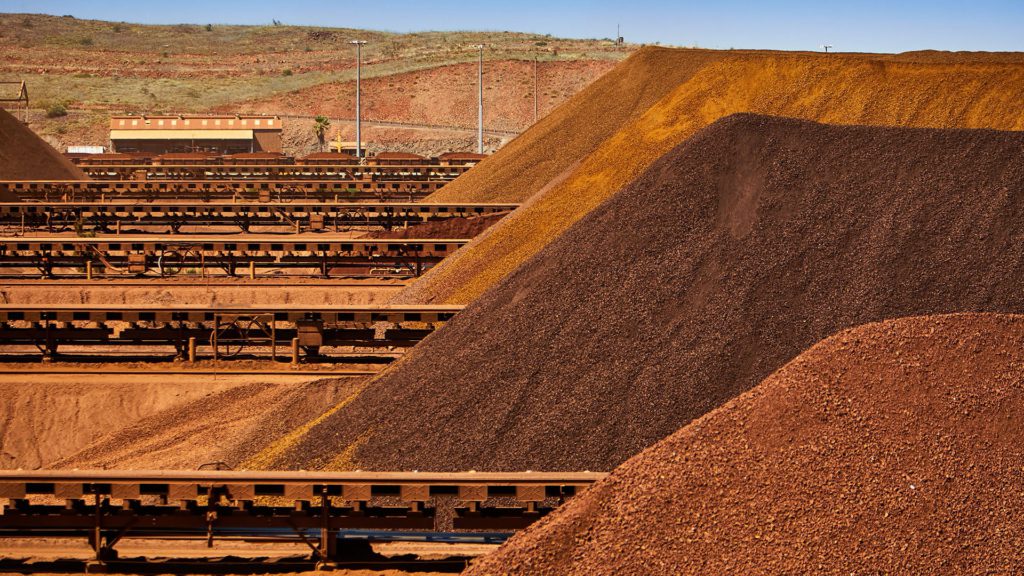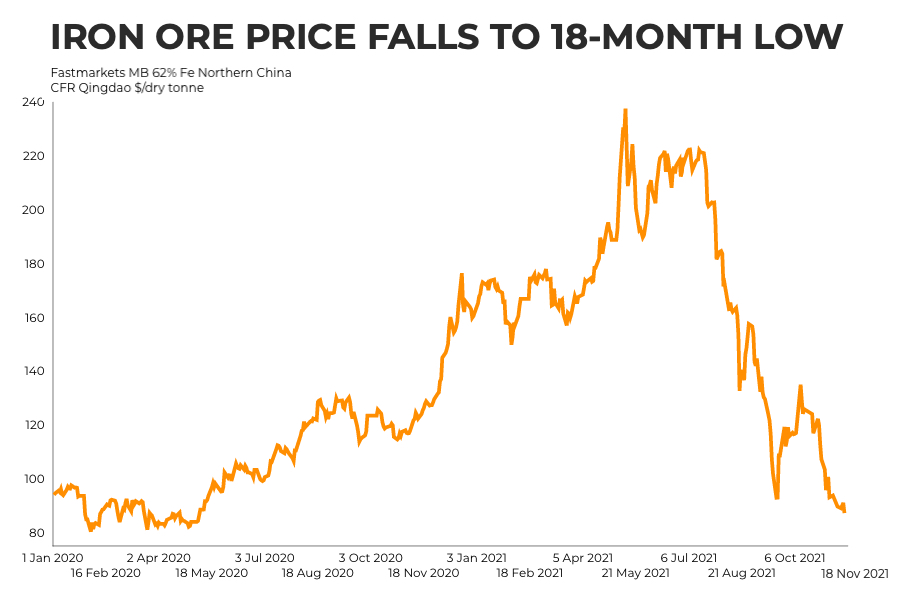
Piles of iron ore at Cape Lambert (Credit: Rio Tinto)
Iron ore prices sank on Thursday, dragged down by a dismal demand outlook for steel products and raw materials in China.
The most-traded iron ore contract for January delivery on the Dalian Commodity Exchange ended daytime trading 5.1% lower at 511.50 yuan ($80.21) a tonne, after touching 510.50 yuan earlier in the session, its lowest since November 4, 2020.
According to Fastmarkets MB, benchmark 62% Fe fines imported into Northern China were changing hands for $87.27 a tonne, down 4% from Wednesday’s closing, the lowest since May 2020.
“The price of iron ore has not yet bottomed out,” analysts at Zhongzhou Futures Co Ltd wrote in a weekly note, citing continuing steel production curbs in China in line with its decarbonisation goals and the turmoil in the country’s property sector.
“The profit of some steel mills turned negative, and the steel mills switched from administrative restriction of production to active maintenance.”
China’s monthly steel production has been falling since July after seeing double-digit growth in the first half of the year, as strict output controls and curbs on power usage dented both supply and demand.

The country’s crude steel output from January-October totaled 877.05 million tonnes, down 0.7% on an annual basis.
Rising iron ore supply, with imported materials stocked at Chinese ports swelling to a 31 month high of 147.60 million tonnes last week, according to SteelHome consultancy data, also added to the pressure on prices.
With China tapping the brakes on steelmaking, top producer Vale said this week is taking to Latin steel mills to diversify its iron ore and pellet sales.
Market analyst Fitch Solutions recently revised down its iron ore price forecast from $170/tonne in 2021 and $130/tonne in 2022 to $155/tonne and $110/tonne, respectively.
In the longer term, Fitch forecasts prices to decline to $65/tonne by 2025 and $52/tonne by 2030.
“We maintain our view that iron ore prices will consistently trend downwards, as cooling Chinese steel production growth and higher output from global producers will continue to loosen the market.”
(With files from Reuters)
No comments:
Post a Comment